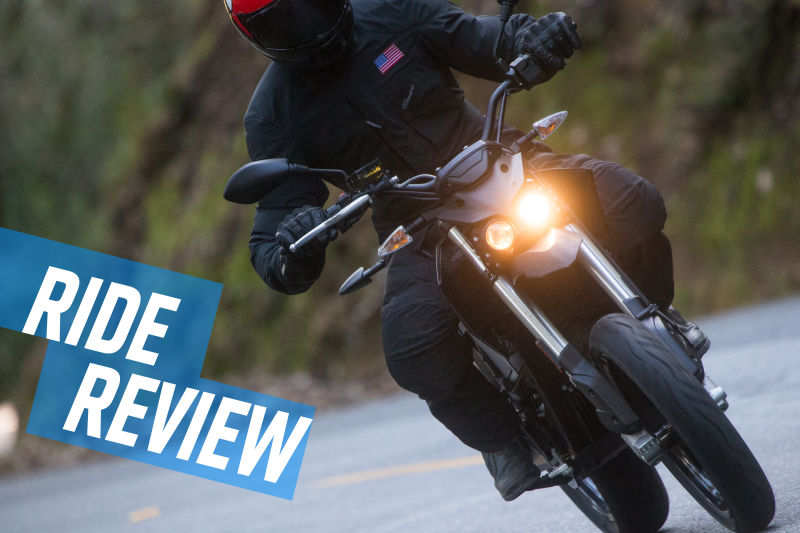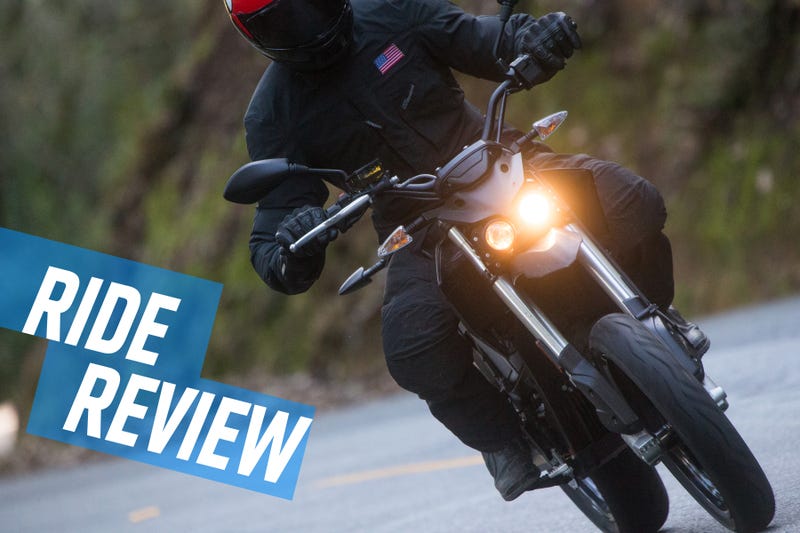
Electric motorcycles are the future. They will offer far more performance, be far more reliable, and run for far longer on one fill-up… someday. That day isn’t today. But with the launch of the new Zero FXS and DSR, we may just be one step closer.
http://lanesplitter.jalopnik.com/2016-could-be-…
(Full Disclosure: Zero wanted me to ride their new DSR and FXS so badly, they flew me to Northern California to visit their headquarters in Scotts Valley and ride their new bikes.)
Advertisement
Commuter electric motorcycles, the ones produced by Zero and Brammo (which was recently purchased by Polaris) have always been great options for a very specific sort of rider. They’ve been great for the tech-savvy motorcyclist who has a very specific commute within a certain range, who cares more about the utility and maybe the novelty than the experience. People who aren’t attracted to motorcycling are often attracted to electric bikes. On the flip side, traditional motorcyclists tend to be left wanting when they experience riding one.
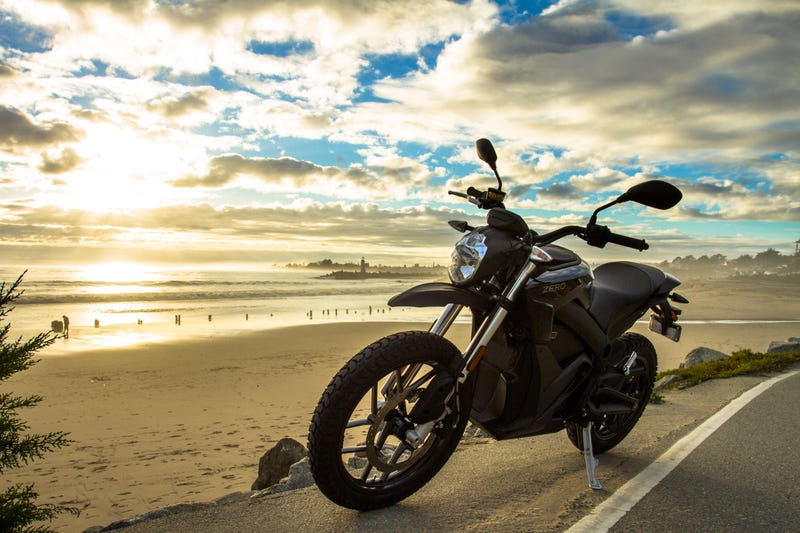
But electric motorcycles have far fewer moving parts than their internal combustion engined (we’ll be dorky here and use the acronym ICE) counterparts, need no fluids, and the electricity needed to run them costs far less than gas. The bikes we were riding had about 400 miles on them, at roughly $0.002/mile, meant they’d cost Zero a bit more than 75 cents to run before we got on them. I know gas is cheap right now, but damn.
Sponsored
With reliability and maintenance costs already solid wins for electric bikes, the only areas left to tackle are battery capacity, performance, and that unquantifiable emotional connection.
The performance thing is close, with electric bikes making heaps of torque and power curves that are infinitely customizable. The only place where they struggle performance-wise is weight, but the bulk of that comes from the battery.
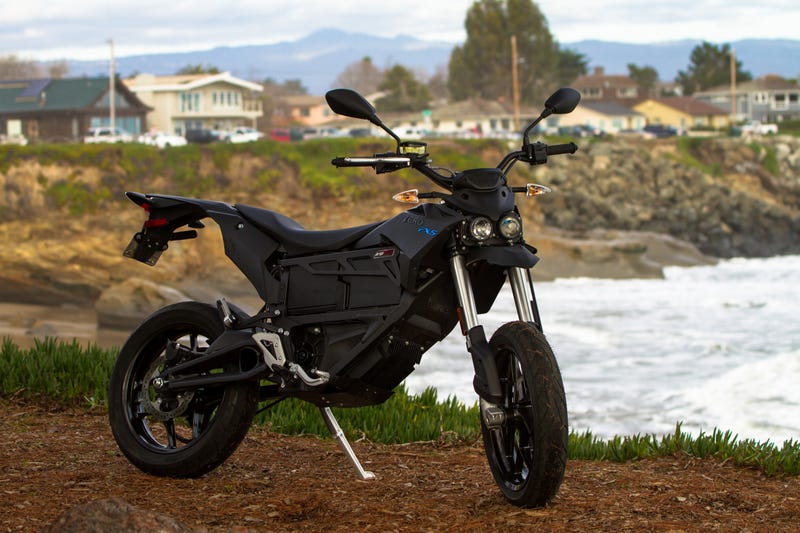
The weight and battery capacity issue will solve itself once Apple or Tesla or someone comes up with a major breakthrough, which leaves just the issue of making the electric motorcycle experience cool and able to pull on the same heart strings as your ICE bike.
The Specs That Matter
Rather than deep-dive once again into Zero’s new IPM motor, their new battery packs, and the company’s new charging system, I’ll let you read this article where I already covered it.
Advertisement
Zero only has one battery that they’ve built, and the different models come with blocks of them connected. The small bikes use one battery block, while the big bikes use up to four.
http://lanesplitter.jalopnik.com/electric-motor…
As a quick recap, the Zero DSR is the up-spec version of the existing DS dual sport bike. It pairs the best amp controller with their biggest battery and new Z-Force motor, which gives it 67 horsepower and 106 pound-feet of torque for an estimated range of 100 miles. The DSR is only available with the big ZF13.0 battery, and has an MSRP of $15,995.
The FXS is Zero’s smallest, cheapest, and lightest model the FX in supermoto trim. They’ve swapped the 21-inch front and 18-inch rear tire for a pair of 17-inch wheels, and given it better suspension, brakes, and tires. The FXS is available with one battery block (ZF3.3) for $8,495 or two (ZF6.5) for $10,990.
We Rode The Damned Thing(s)
Our first day was spent in the classroom. Well, by classroom, I mean the bikes’ manufacturing plant. But it felt a lot like my old job (teaching) and not a lot like sitting on a motorcycle.
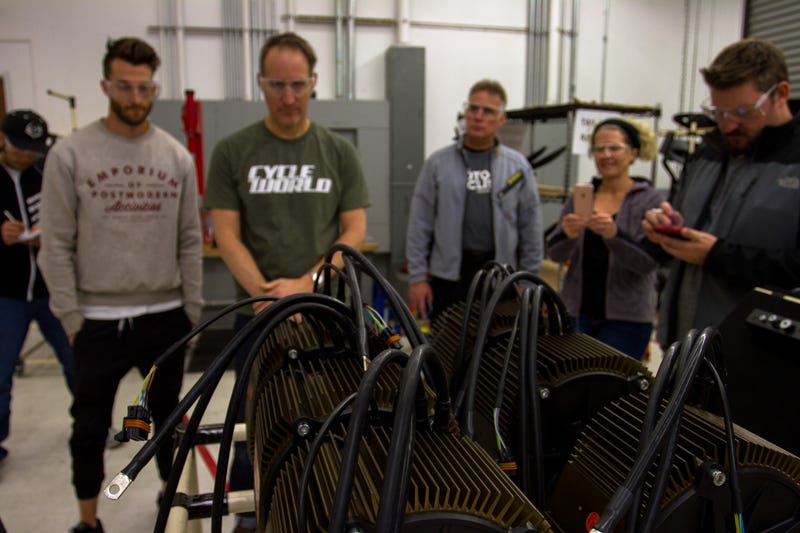
However, despite that fact that all I wanted to do was ride the aforementioned damned things, my tour of the Zero facility was actually quite interesting. As a company, they’ve come a long way in a few short years. They have found ways to make batteries more efficient and run cooler, which in turn adds range. Their manufacturing process ensures every component is checked both by machine and several sets of human eyes.
After our time in the classroom and a brief lunch, we set out to ride the Zero DSR around Santa Cruz before the rain hit. It had been several years since the last time I was on an electric, except that one time Harley-Davidson let me ride a Livewire around the block in a tiny formation well under the speed limit, and it was a good reminder that electrics ride much differently than ICE bikes.
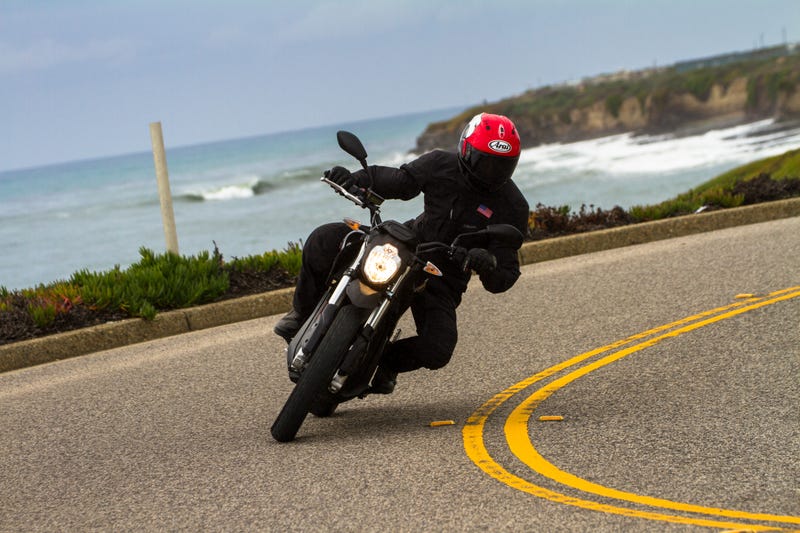
With only one gear, they feel like a two-stroke stuck in fourth. They take a bit to spin up and then come on strong, and then free-wheel once you let off the throttle. That, mixed with the rain coming on strong right as we got on the FXS, cut the day short as we retreated to the hotel. Low weight bikes you have zero (pun intended) experience with, and make tons of torque in ways different than you’re used to, on slippery roads is a great way to end a press trip early.
Day two had us riding from Santa Cruz to the popular Alice’s Restaurant in Woodside, California, where we’d swap to the FXS for a few loops on a windy route, and then hop on the DSRs home. The DSR’s added power and range over the DS is nice and notable as you ride it, but overall the improvements are incremental.
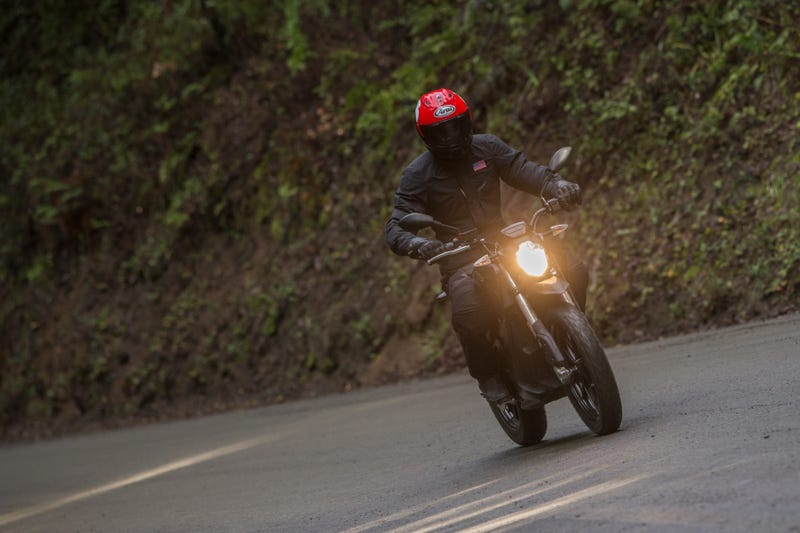
We did 51.7 miles, which included several photo stops, and my DSR told me I had 39 percent battery and a range of 34.5 miles left, giving the bike a range of 85 miles or so. Now, we were all likely fairly ham-fisted with the bikes when we could be (for science’s sake of course!), but I wouldn’t call the days ride very atypical of normal use either. If I’m honest, I expected more range.
After lunch, we switched to the thing we’d all really come to ride, the FXS. A fairly light electric supermoto with more torque than Clubber Lang is a great way to get a motorcycle journalist’s attention, and we were all eager to get some time on it.
At 293 pounds and with 44 horsepower and 70 pound-feet of torque, it makes the 321 pound, 32 horsepower, 24 pound-feet of torque Suzuki DR-Z look like it belongs in the D league. At least on paper.
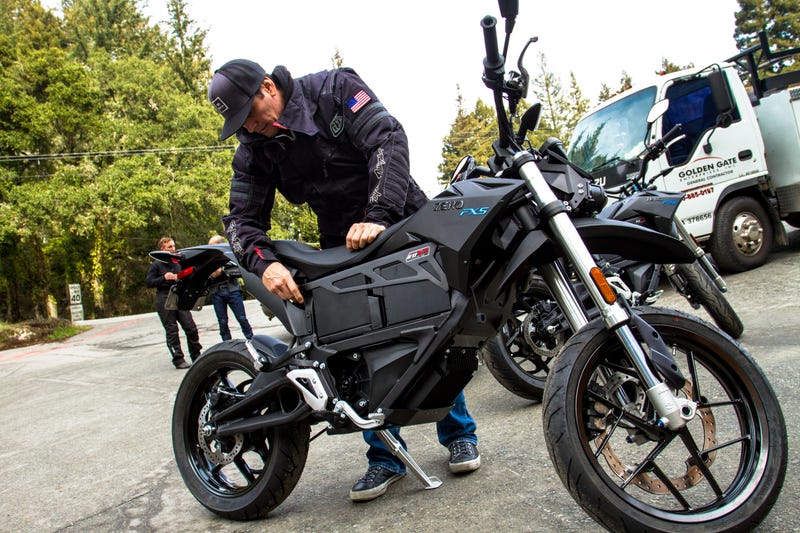
From Alice’s, we headed up Skyline Boulevard, then east on Kings Mountain Road and head back up the hill on Highway 84. Once at the top, Zero demonstrated how fast it was to swap the batteries (it takes less than 60 seconds) before we turned around and ran the loop in reverse. Zero’s tech unscrewed a few screws from the battery cover plate and the slide the batteries out of the side. New ones went in, the connector terminal was secured, and voila! More power!
Here’s where things get tricky. On one hand, the FXS feels like it does supermoto things really well. The weight is fairly low, but it’s also very dense which allows Zero to carefully position the bike’s center of gravity. That, paired with the new rubber and suspension changes that lower the front 1.6 inches make the FXS as agile as a dog with a ball it doesn’t want to give up.
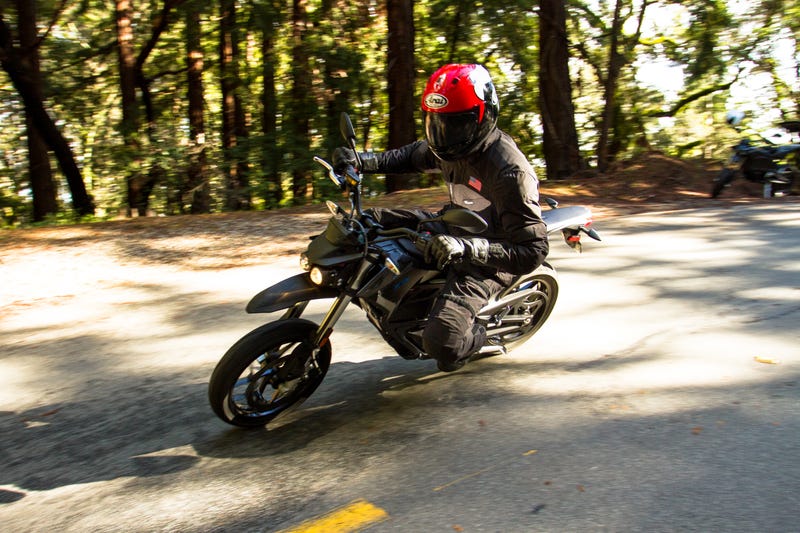
The suspension is pretty good, though I would have liked more time to tinker with it as I was getting a little more brake dive (when the front end drops or dips too far under braking) than I like when I’m riding anything sporty.
The brakes are plenty adequate, although it’s clear Zero didn’t have the funds to spring for the nice Bosch ABS unit because this one is likely the worst I’ve ridden. It wanted to let go of the rotors anytime I hit a bump while braking, which lead to more than one instance where I was pretty sure I was headed into the trees.

My real issue here is with the power. Or rather, the way power is delivered. Sure, the FXS makes monstrous power compared to something like a Suzuki DR-Z400SM but, without gears as power multiplier and with a power controller set to “don’t let me kill myself,” I felt robbed of the supermoto experience.
Sure, when I was in the mid-range of the single gear, there were gobs of power and I had a blast – when I rode it like a sportbike. But the point and squirt, “lemme go hop that curb real quick” nature of the supermoto was gone. The mischievous devil on my shoulder was gone, and was replaced with a sensible, albeit incredibly agile angel who just wanted to get to ride to work.
Even little techniques we use as riders subconsciously have to be adapted. I tried to use a blip of the throttle to lighten the hit taken by a bump in the road, something that normally would lighten the front wheel slightly but not actually increase my speed thanks to an ICE bike’s engine braking.
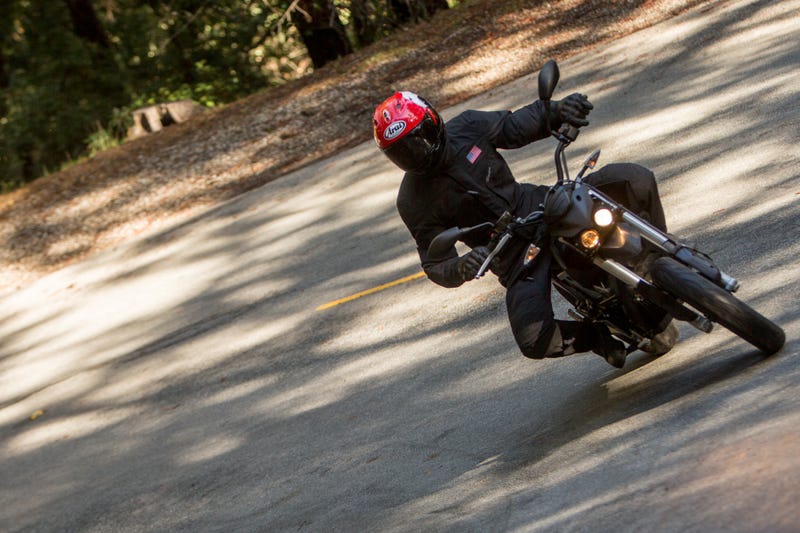
What resulted was my speeding up after I’d hit the bump and then needing to get on the brakes after the bike wanted to freewheel into the guy in front of me. Because, unlike an ICE bike, there isn’t that bottom hit of power and without gearing, the bikes don’t have nearly enough engine braking and carry any speed you give it.
By the end of the day, I kept noticing that I’d learned an entirely new throttle application technique. On these electric bikes, I never really found myself at constant throttle, because the only friction presented on the bike is that between the tires and the road (and gravity). Instead, I just blipped the throttle whenever I needed to go a little faster, and the bike would carry the speed.
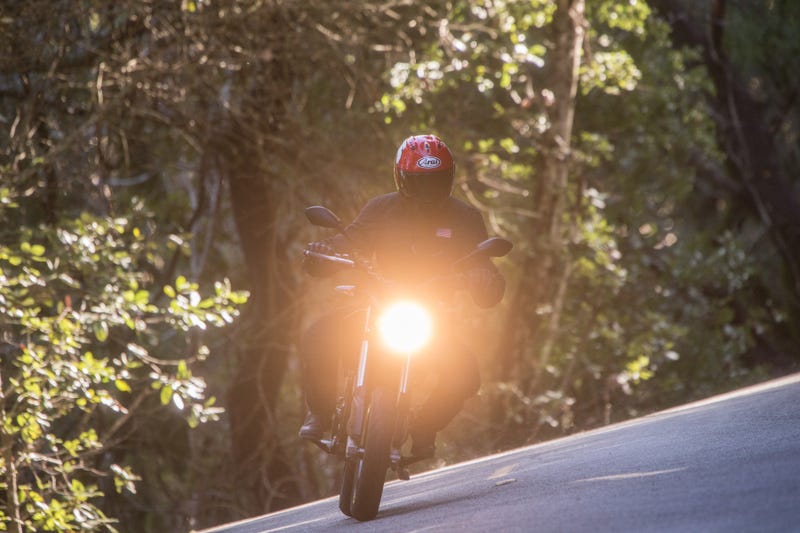
After the ride, I spent some time talking with Zero’s Senior Battery Specialist Luke Workman. The conversation started about battery tech in general because, as I’ve said many times, I think the electric motorcycle worlds needs to focus on applying electric power to motorcycles and wait for someone else to solve the battery capacity issue. They have the brainpower, resources, and much larger need, right?
He looked at my with a sly grin on his face, when he told me that more money was spent last year on battery research and development than every other year in human history combined, and that I would be very happy with where things were headed.
The really interesting thing came from where our talk went, however. You see, my issue with Zero’s power delivery is not one of ability, but one of choice. Zero spent so much time listening to their consumers and lawyers that they’ve chosen to make the power come on in this late and linear fashion by choice, not by any limitation in ability.
Don’t believe me? Check out Workman’s Death Bike: a tandem bicycle he built that destroys Tesla S P85. This guy is about as close as it gets to a mad scientist, and I sort of have to love and respect his approach. He wants to give you all of the power possible, and let your right wrist be the only thing keeping you from looping the bike at any given time. Because they have the power to do that.

Fortunately for the common man, more level (or at least more legal) heads prevailed and the bike’s controller keeps delivers the power in a way that’s manageable for most. I don’t know what kind of waiver I’d need to sign, but I pray that someday the parameters on Zero’s helpful app are stretched from something a newbie can ride on any setting to “for experts only.”
The Zero app, which connects to the bike via bluetooth, is actually really cool and give you information on your usage, battery state, and some options to adjust bike performance. If only those let you really turn the bike up to 11.
What We’d Change
If it sounds as if I didn’t like the bike or would change a lot, that actually isn’t the case. I understand and sympathize with the positions these companies are in when it comes to our sue-happy culture, and know that it has to be incredibly difficult to give everyone a package they like with a platform that’s completely customizable.
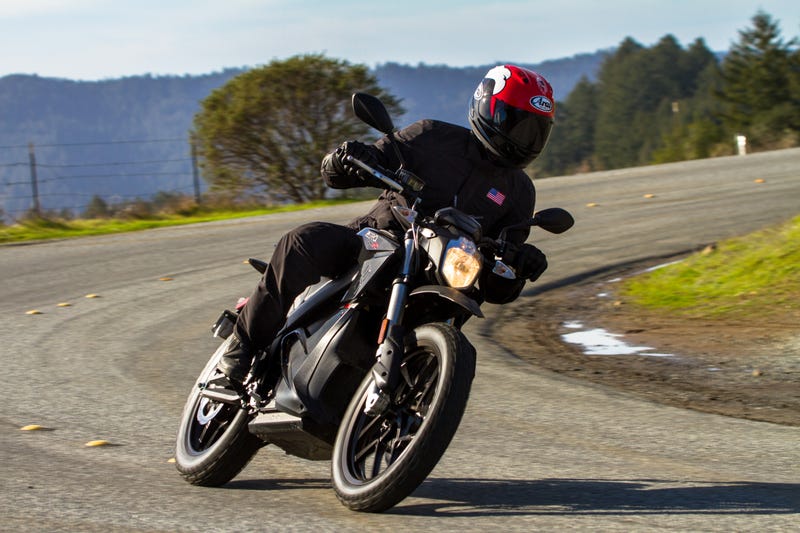
I don’t know if anyone has quite figured out the right way to apply electric power to motorcycles. As linear and mellow as the initially power of the bike is, I still almost had the rear end get away from me as I hit a slippery spot pulling away for a photo run.
I’d love to see Zero opt for a better ABS system and add a traction control system, especially given how different the power delivery is. However Zero was pretty honest about just not having the funds to pay Bosch, who basically have a monopoly on the market, and it’s sort of hard to be mad at them for being a small company.
The biggest thing I’d like to see is for Zero to keep working on quick charging and battery technology for obvious reasons, but also to make the power delivery less conservative.
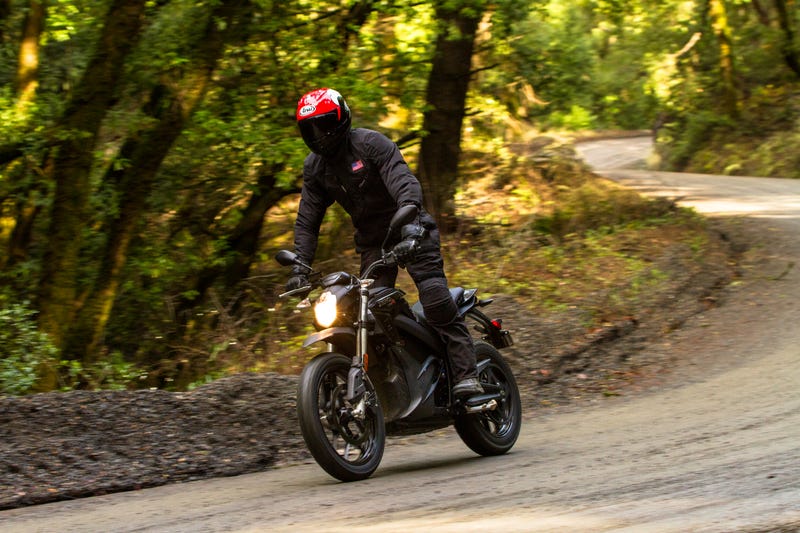
Also, make the damn thing totally silent or pipe in fake engine noises or something. The whine of the belt drive ruins the whole “ride in silence” thing and, if I can’t have that, I want vroom vroom or playing cards in the spokes noises or something.
As far as the DSR is concerned, lots of electric power and wheels that spin up quickly make for an unconfident ride in the dirty stuff, the riding position did not take kindly to standing for my six-foot frame, and the suspension was in no way meant to handle anything but pavement.
You Wanted To Know
I posted a pic of the bike on those social medias the kids are always talking about and asked what your questions were about the bike so I could help tailor the review to what you wanted to know. If you aren’t following me onInstagram or Twitter, you really should be. I try and keep the food and cat pics to a minimum.
- “You can only have one bike, does an electric one make the cut?” – I haven’t ridden the Alta Supermoto yet, but I’m guessing it’s going to be five years before the answer to this question is yes.

- “How often do you feel compelled to make your own engine noises while riding?” – OFTEN.
- “Does the lack of a clutch make it harder to wheelie or is it easier because of all the torque and no gears to change mid-wheelie?” – Yes! You should have seen all the guys yanking on the bars trying to wheelie, it’s incredibly difficult. But then, like when I lost traction slightly, it comes up QUICKLY.
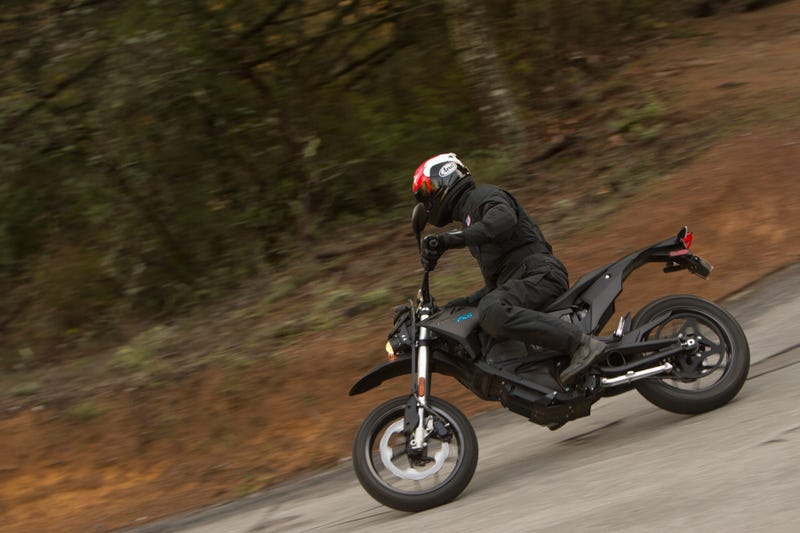
- “Could it replace your DR-Z?” Sorry, but no. It makes more power and is faster to 60, but I’ll take the shifting and the wheelie-ing and the sliding any day.
- “Power curve of an electric bike + loose dirt on a trail = ?” – Not a lot of confidence in using the rear to turn. This could likely just take a lot more time to get used to but, even though the connection to the rear wheel feels pretty linear, it also feels like it’s run through several filters and is disconnected. You’re never quite sure when it’s going to spin and, when it does, boy does it go quickly.
Why You Should Care
Zero is growing at an incredible rate, both in sales and technology, with 40 percent growth and a new bike that makes 5.2 times the power and 2.4 times the torque as their 2009 SR.
And both bikes are good. The FXS isn’t quite the supermoto experience I’d hoped it would be, at least on the street, but we have something special planned to see how it does on the track and in the hands of some more capable riders.
The DSR is not quite as sexy or fun around town, and it certainly is no adventure bike, but it’s definitely the best option for most people as it makes the most power, has the best range, and looks pretty damn nice.
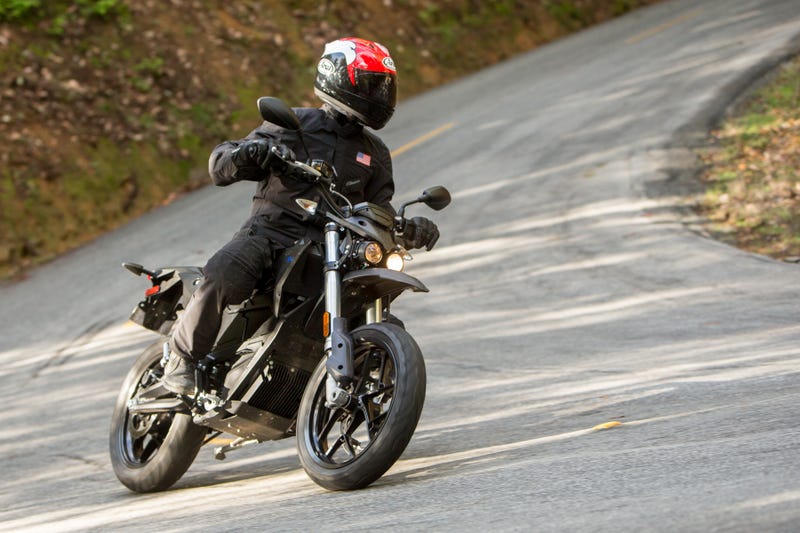
If anything, my time in Scotts Valley taught me that Zero is going to do really fun things, they aren’t going anywhere, and we should expect many more incremental gains like this from them.
Electric motorcycling is still in its infancy stage, but Zero is well on it’s way to bringing us into the next stage and I have far more confidence their offerings will increasingly impress.
Sean’s Gear:
Helmet: Arai Corsair X KR-1
Suit: Aerostich R-3 Light Stealth One Piece
Gloves: REV’IT Roadstar GTX
Boots: Dainese Latemar Gore-tex
Photos: Zero
Contact the author at sean.macdonald@jalopnik.com. Follow Lanesplitter onFacebook and Twitter.

